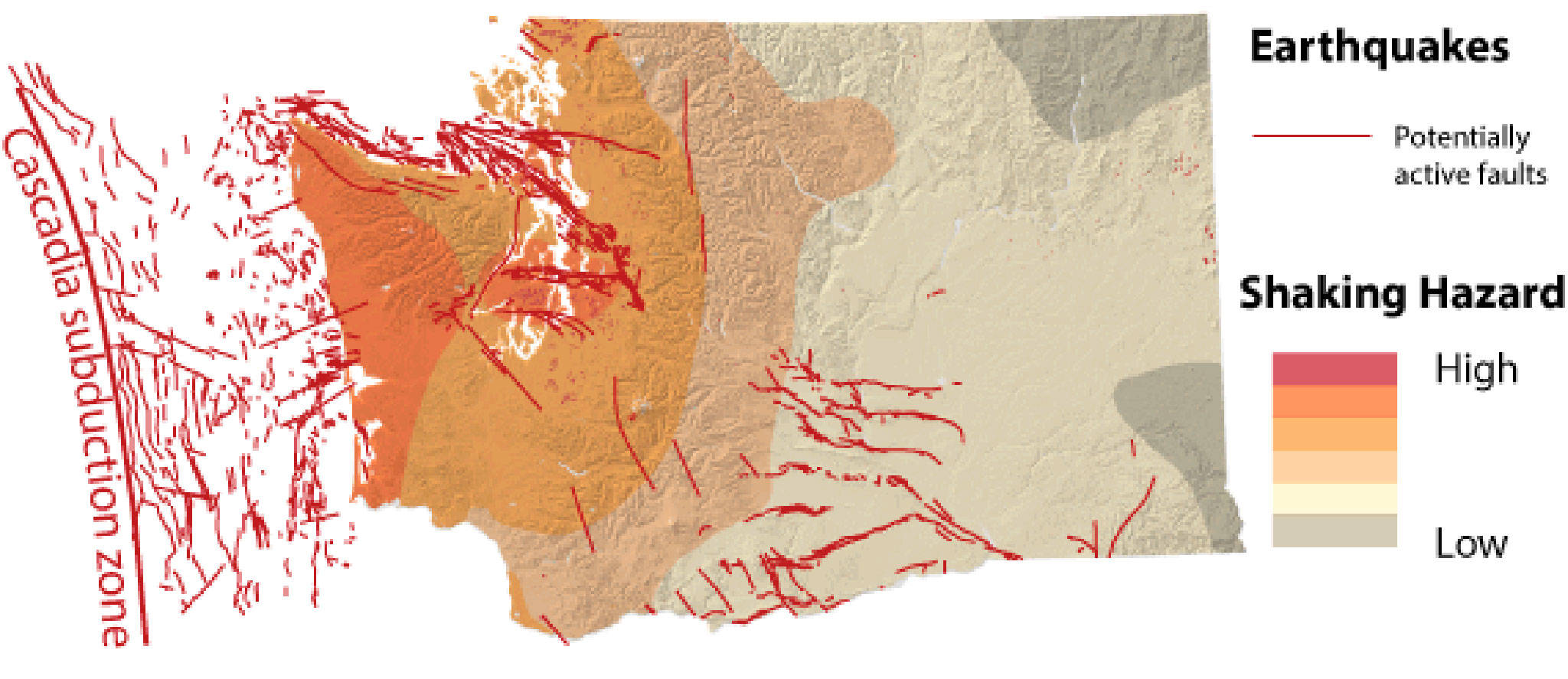By The Herald Editorial Board
Thursday’s 6.4 magnitude earthquake in rural southern California, the largest quake in the region in 20 years, resulted in multiple injuries and some damage but, thankfully, caused no known deaths.
Paired, however, with a state report on the seismic safety of a representative sample of the state’s schools — including several in Snohomish and Island counties — it should help shake the complacency of state lawmakers, school officials and taxpayers about immediate and longer-term work needed to better prepare those buildings for earthquakes.
The report, released last week by the state Department of Natural Resources, examined 222 school buildings in 75 school districts throughout the state, about 5 percent of the state’s 4,444 public school buildings. The $1.2 million study, authorized by the Legislature in 2017, will be followed by a similar review of 300 to 350 additional school facilities, following lawmakers’ authorization of another $2.2 million this year.
About 70 percent of the state’s schools are located in areas of high risk for earthquakes, the report says. Significant quakes are most common in Western Washington, with potentially active fault lines crisscrossing the Puget Sound region and outlining its coastal regions.
Of the school buildings examined, the study — which used site inspections and review of design drawings — estimated damage and based risk assessments on the Cascadia subduction zone earthquakes that occur every 400 to 600 years and can reach magnitudes ranging between 7 and 9. The last known subduction zone quake was more than 300 years ago.
The report found that most school buildings, particularly older buildings, would not be safe to occupy after a significant quake; about 25 percent would be beyond repair; and that more than 43 percent posed a “high” or “very high” risk for loss of life.
“The time to act is now, before we have a damaging earthquake and/or tsunami that could be catastrophic,” warns a cover letter sent to each school district that accompanied individual assessments of buildings and their risks.
Among the school districts participating in the seismic study were Marysville and Darrington school districts in Snohomish County and Coupeville and South Whidbey school districts in Island County. All buildings, including gymnasiums and other facilities, were reviewed, but more detailed studies were made for two specific buildings — one in Marysville and another in Coupeville — that also included general estimates for the costs for work to retrofit the buildings.
The school-by-school review found:
Of nine Marysville school buildings reviewed, six were judged as posing a “very high” life-safety risk; two as “high” and one as “moderate high.” The percentage for estimated building damage ranged from 49 percent to 77 percent. The buildings reviewed were built between 1951 and 1966.
Of Darrington’s three buildings studied, its high school, built in 1935, poses a “moderate high” risk with 44 percent estimated damage; and its 1960-built woodshop was judged at “high” risk to safety with a 65 percent damage estimate. By contrast, its 1990-built elementary school earned a “very low” risk rating with a 14 percent damage estimate.
South Whidbey’s one building in the study — South Whidbey Elementary — built in 1988 was rated as a “low-moderate” risk, with a 37 percent damage estimate.
Of Coupeville’s six buildings studied, only one — Coupeville Elementary, built in 1974 — was rated as “very high” risk with estimated damage of 81 percent.
Districts were told the intention of the study wasn’t to create another “unfunded mandate” for them but to evaluate the statewide extent of seismic vulnerabilities, particularly among older school buildings, and begin to assess the costs of improving the safety of those school buildings. Along with the districts, the governor and Legislature are also receiving the information, the report said.
Work to retrofit schools won’t be cheap, with an average cost of $75 per square foot. The work to improve the main building at Marysville’s Totem Middle School, for example, could cost between $1.45 million and $2.72 million, the report estimates.
Those are costs that can’t realistically be born solely by many school districts, especially those who have had difficulty in passing bond elections to fund school construction, with the result that those districts have had to push the service life of older buildings rather than welcome newer construction that is seismically stronger.
The individual seismic reports are detailed enough to help districts identify and prioritize their greatest needs. But the reports also require the attention of lawmakers — who rightly funded the reviews — about yet another fiscal responsibility that is part of the state’s “paramount duty” to fund basic education.
Individual communities, too, especially when bond requests are made, also should give these reports their consideration. More than just school buildings, often these buildings are pressed into service when disaster does strike and safe space is needed for shelters and centers to direct relief and emergency management operations.
Moreover, each community’s children spend a significant portion of the day within the walls of these schools and deserve buildings that will protect them rather than pose a risk to their lives.
Talk to us
> Give us your news tips.
> Send us a letter to the editor.
> More Herald contact information.

























